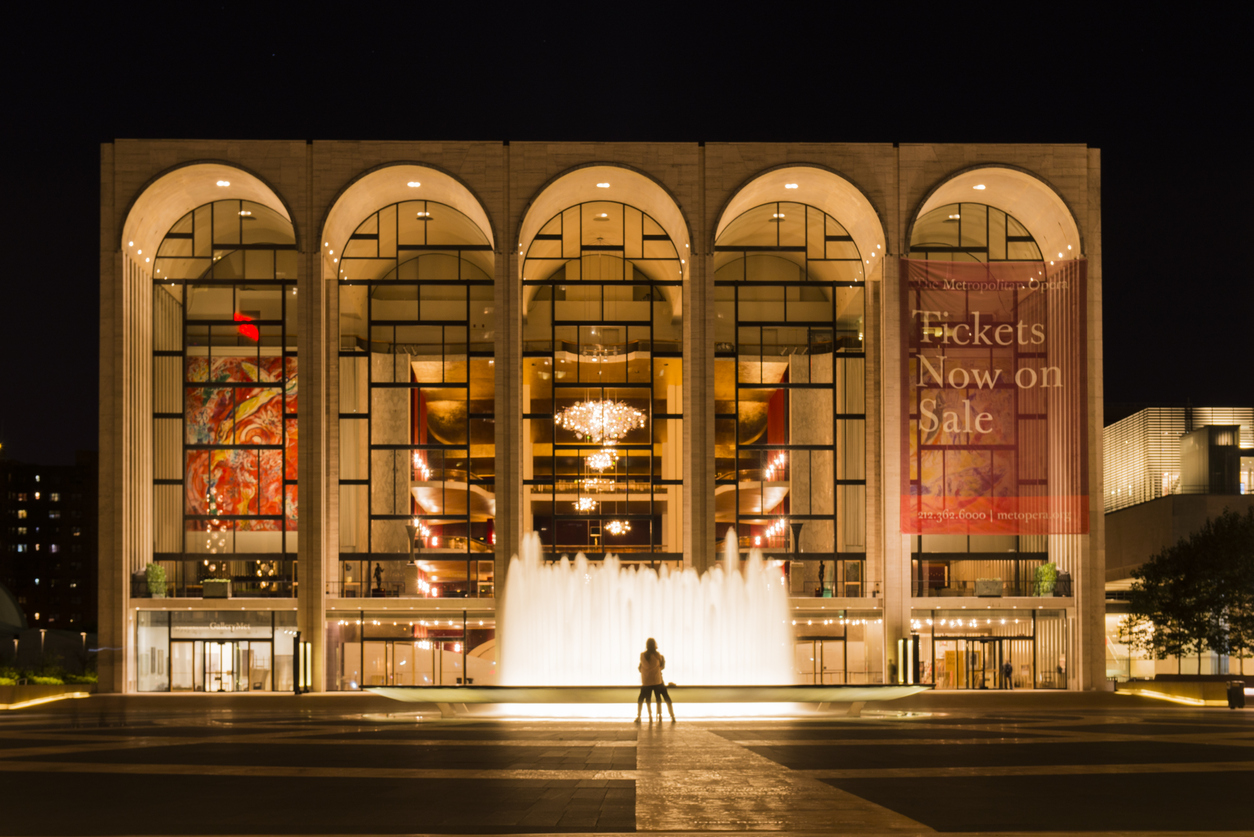Table Of Content
Part one features a lush landscape of tropical beauty, imagining what the Divine might look like was the driving inspiration for this setting. The Italian Opera House and Palmo’s Opera House (below) were the two first purpose-built opera houses, meaning, designed and used specifically for opera. Prior to that, there were other venues used for opera, which included Castle Clinton and Niblo’s Garden.

Met Titles
His collaborator on Carmen was Ludovic Halévy (1834–1908), the nephew of composer Jacques Fromental Halévy (creator of the opera La Juive and Bizet’s father-in-law). The libretto is based on a novella by Prosper Mérimée (1803–1870), a French dramatist, historian, and archaeologist. Hänsel und Gretel was the first complete opera broadcast from the Met on Christmas Day 1931. Regular Saturday afternoon live broadcasts quickly made the Met a permanent presence in communities throughout the United States and Canada.
Metropolitan Opera House (39th Street)
But, we are also capable of utterly horrific acts of destruction, like the slaying of children. If you are watching the news right now, we are living in that moment of creative acts of generosity and also people being capable of doing the most devastating things to the most innocent. When I think about why I want to come to the theater and why I want to come to opera, it’s because I want to reckon with that. This is why it’s time for ‘El Niño’ right now,” said Lileana Blain-Cruz.
Upcoming Performances
Even so, the Old Met will face the chopping block in the mid-20th century, a story detailed in both the podcast in a previous article. The Astor Place Opera House is the first of the big purpose-built opera houses and one of the most famous of the lost opera houses. As its name suggests, it was located at Astor Place, on the wedge of land bounded by Lafayette Street, East 8th Street and St. Mark’s Place. The Astor Place Opera House was conceived by a man by the name of Edward Frey, an impresario who managed the opera house during its entire, short-lived history. New York City’s lost opera houses are having their fifteen minutes of fame, thanks to the HBO show, The Gilded Age, which brought their dramatic histories to life in the most recent season. We dug into these former opera houses in a new extended episode of the Untapped New York podcast which weaves in clips from The Gilded Age, which were kindly provided to us by HBO.

Principal conductors
The new series of opera on PBS was called Live from the Metropolitan Opera. This series remained on the air until the early 2000s, although the live broadcasts gave way to taped performances and in 1988 the title was changed to The Metropolitan Opera Presents. Dozens of televised performances were broadcast during the life of the series including an historic complete telecast of Wagner's Ring Cycle in 1989. In 2007 another Met television series debuted on PBS, Great Performances at the Met. This series airs repeat showings of the high-definition video performances produced for the Metropolitan Opera Live in HD cinema series.
Vintage Photos: NYC's Lost Metropolitan Opera House - Untapped New York
Vintage Photos: NYC's Lost Metropolitan Opera House.
Posted: Wed, 24 Jan 2024 08:00:00 GMT [source]
If you lived in this area during the early 20th century, you didn’t need to travel far to see the great stars of the theatrical world. The theme is accompanied by a dress code — this year, it’s “The Garden of Time.” The theme and dress code are often interpreted ... But it’s the carpet itself that draws the world’s eyes, with the 400-strong guest list the subject of rabid speculation until the last minute — a collection of luminaries that arguably makes for the highest celebrity wattage-per-square-foot of any party in the world.
The opera house was built by mountain man-turned civic leader James W. Waters and his partner, Herman Brinkmeyer, as an investment in 1882. The beautiful red brick edifice with white facade topped by a golden eagle was known throughout the country for presenting top quality shows and concerts. Director Lileana Blain-Cruz’s dedication to building her production around interpreting the body is what makes “El Niño” timeless and so very urgent as an art form to evolve what opera has been, is, and will be to come. Her intelligently founded team of creatives took this production to the new heights that Met Opera dreams about. There was also a Baroque two-dimensional staging mixed with Afro-Caribbean painting influences that made “El Niño” feel romantic and very intimate for such a large stage as the Met.
Anthony Davis’s groundbreaking and influential opera, which premiered in 1986, arrives at the Met at long last. Theater luminary and Tony-nominated director of Slave Play Robert O’Hara oversees a potent new staging that imagines Malcolm as an Everyman whose story transcends time and space. An exceptional cast of breakout artists and young Met stars enliven the operatic retelling of the civil rights leader’s life. Kazem Abdullah conducts the newly revised score, which provides a layered, jazz-inflected setting for the esteemed writer Thulani Davis’s libretto.
Rosario Castellano’s poem “Memorial de Tlatelolco” is where Part two climaxes, however the lead up to this point must be described first. The libretto is adapted by Peter Sellars and John Adams from poems by Rosario Castellanos, Gabriela Mistral, Hildegard von Bingen, Sor Juana Inés de la Cruz, Rubén Darío, Vicente Huidobro, Martin Luther, and texts from the King James Bible, The Wakefield Mystery Plays and gnostic gospels. This vast spectrum of interpretation creates the body of “El Niño,” resonating a rare fecundity that outweighs efforts of the mind and instead speaks directly to the heart. Discover the city’s most unique and surprising places and events for the curious mind.
FM broadcasts were added in the 1950s, transmitted to stations via telephone lines. Starting with the 1973–74 season, all broadcasts were offered in FM stereo. Satellite technology later allowed uniformly excellent broadcast sound to be sent live worldwide.
Jennifer Pyron covers a wide range of opera performances and performers in the New York Opera scene. You are changed when you leave the theater after experiencing one of his works. This is what great art is to me. ‘El Niño’ is a piece that has so many different levels, as we all come to it with our own pre-judgement.
Johnson served the company for the next 15 years, guiding the Met through the remaining years of the depression and the World War II era. Toscanini served as the Met's principal conductor (but with no official title) from 1908 to 1915, leading the company in performances of Verdi, Wagner and others that set standards for the company for decades to come. The Viennese composer Gustav Mahler also was a Met conductor during Gatti-Casazza's first two seasons and in later years conductors Tullio Serafin and Artur Bodanzky led the company in the Italian and German repertories respectively.
Opera singer and director Ira Siff has for several years been the commentator along with Juntwait or Heath. Beginning in 1898, the Metropolitan Opera company of singers and musicians undertook a six-week tour of American cities following its season in New York. These annual spring tours brought the company and its stars to cities throughout the U.S., most of which had no opera company of their own. The On Stage at the Met gala, which takes place on the magnificent stage at the opera house in New York, will feature a black-tie dinner, dancing, and performances by extraordinary Met artists.
Longtime San Bernardino resident Janet Miles, who died in 2008 at age 107, recalled in her memoirs (published by the San Bernardino Historical and Pioneer Society in 1994) there were box seats on the north and south walls with red velvet curtains at the rear. Birdie Bohan and Edith Ulrich were the pianists, Ernest De Soto, the violinist, and Mr. Parsons played the drums. National companies on tour introduced both grand and light opera performances. Entering the museum, guests walk past what is usually an impossibly enormous flower arrangement in the lobby, with perhaps an orchestra playing nearby, and over to cocktails. To 8 p.m., followed by dinner, but the most famous — or those who plan to make the biggest entrance — sometimes come (fashionably) later. Soprano Julia Bullock’s voice blossomed as she described the story of her discovery in “Hail Mary, Gracious!
Unofficially, it’s the party of the year, the Oscars of the East Coast and “an A.T.M. for the Met” (the last according to the publicist Paul Wilmot). Consider that last year’s event raised almost $22 million, while the Met’s Art & Artists Gala raised $4.4 million. Even Moses’s supporters, and there are many, who argue that his take-no-prisoners vision was necessary and ultimately for the good might fairly ask, “Where did all those people go? ” Indeed, there is no point in this documentary when it appears like an independent biography of the Met building but rather like something that could comfortably be discussed in the Dress Circle Lounge at intermission. An early Wallace K. Harrison design for the new opera house at Lincoln Center.
According to Sun columnist Earl E. Buie, in one of his “They Tell Me” columns in 1958, the Opera House’s seating capacity was between 1,200 and 1,400. If you’re in New York, you can also join fans across the street, behind barricades, on Fifth Avenue or even further east on Madison. And the AP will have a livestream of departures from the Mark Hotel, where many gala guests get ready.

No comments:
Post a Comment